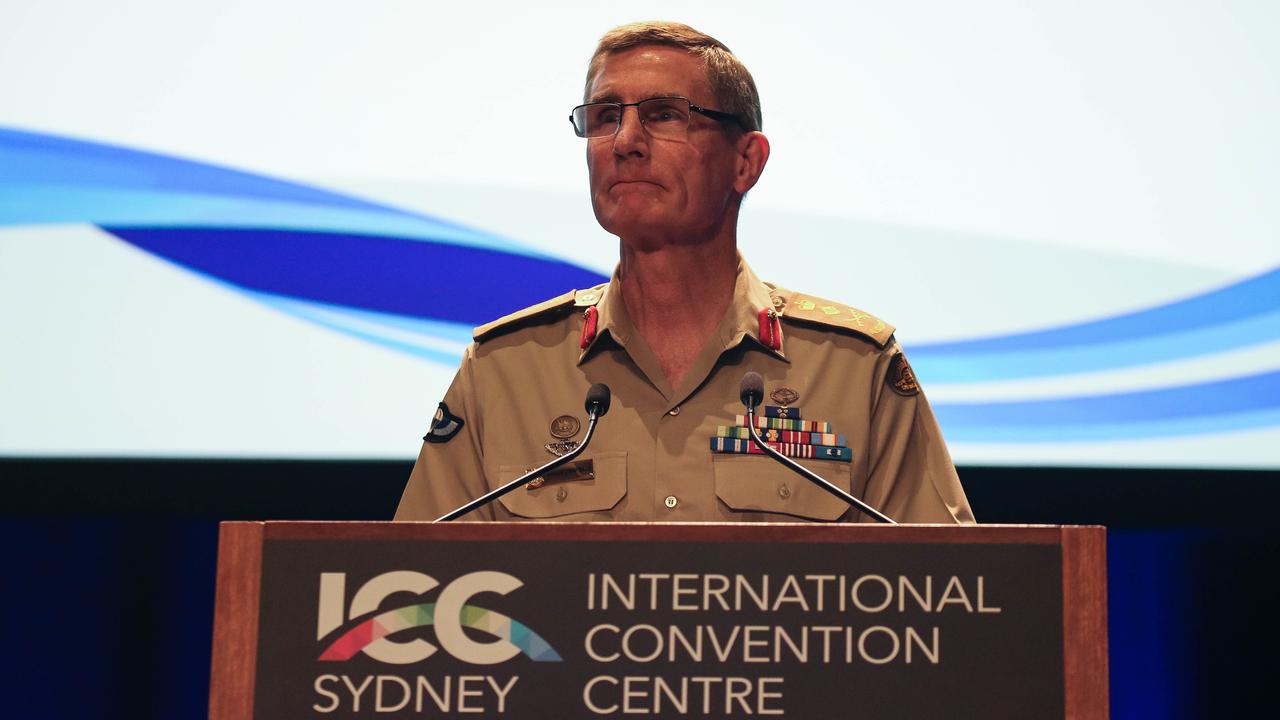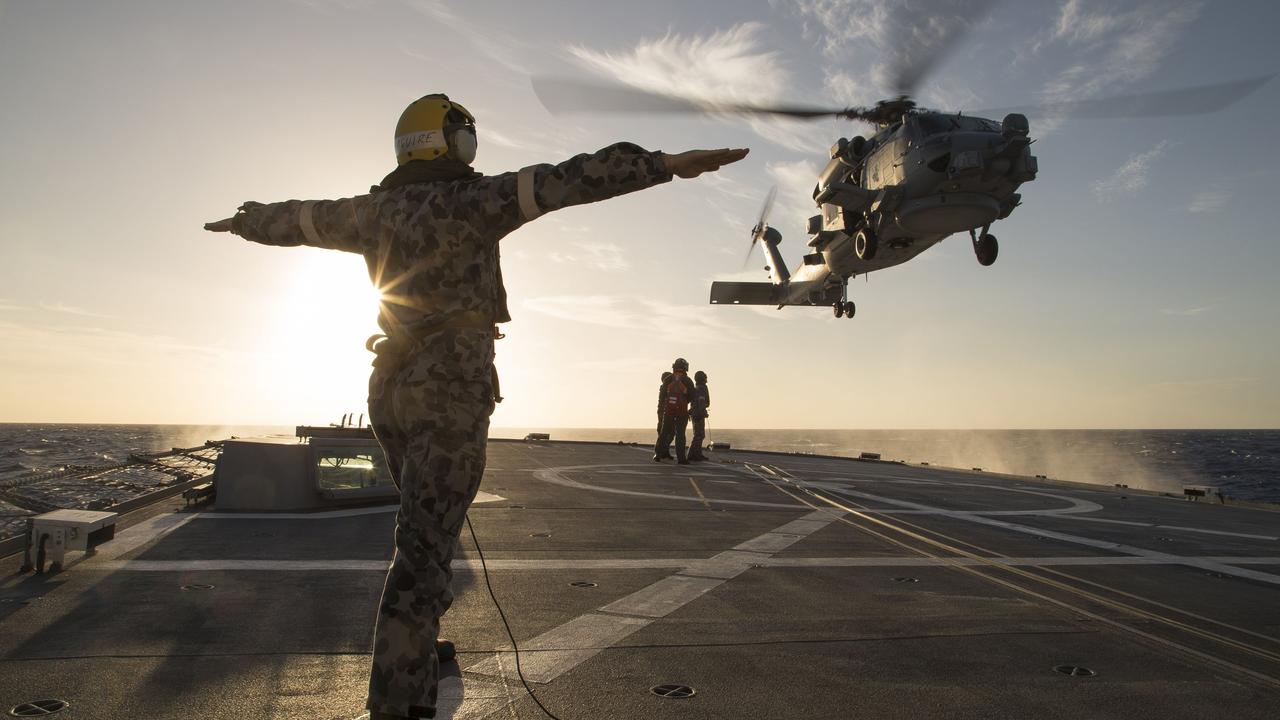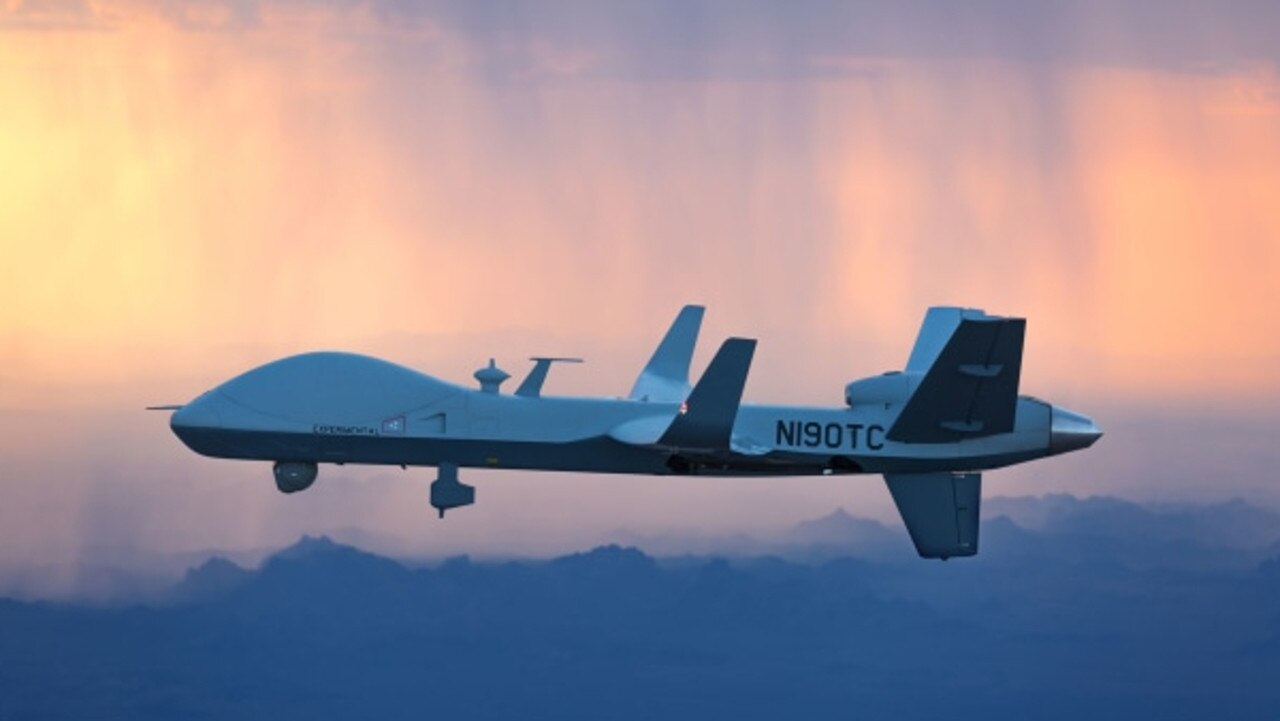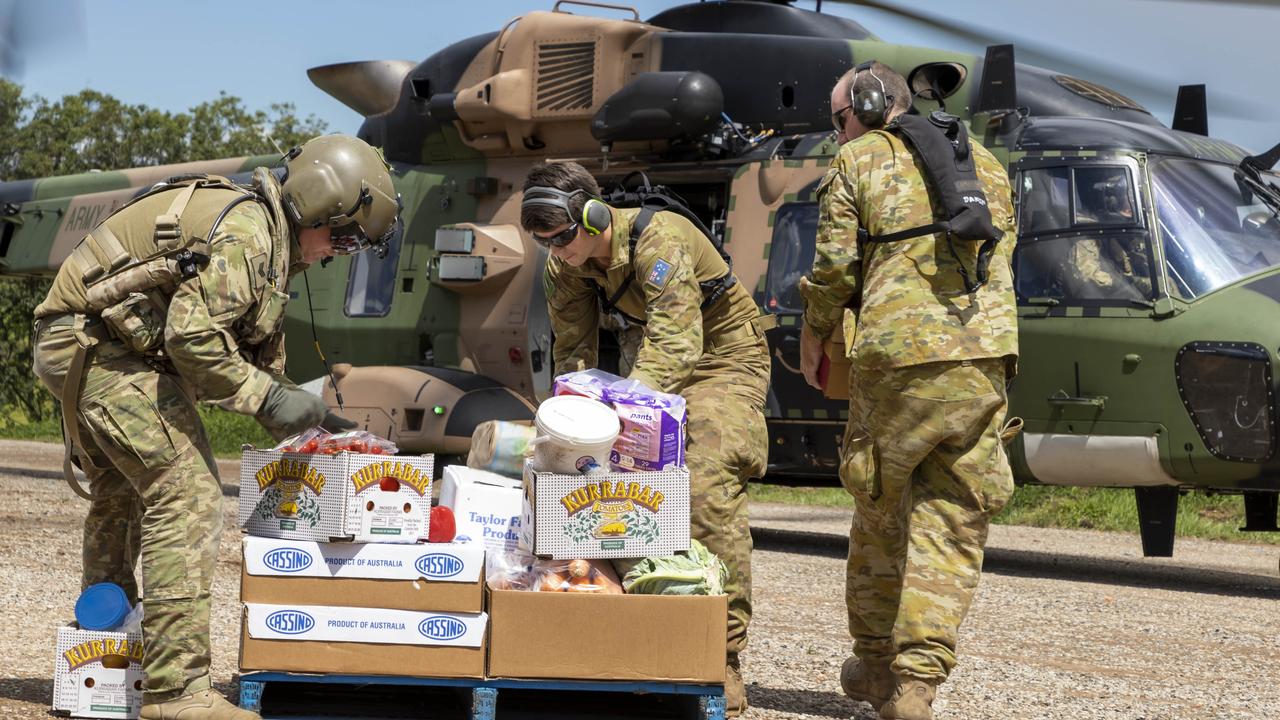If threats of a Pacific war became reality, how prepared is Australia?
The chief of the Australian Defence Force has given an update on a review of the state of the region militarily - and there is little to smile about. See why.

Two weeks ago and as impossible as it may seem, Australian Defence Force chief General Angus Campbell looked more stony-faced than usual as he took to the lectern before a capacity 1000-seat auditorium.
But then none of those assembled, from his senior officers to top brass from Indo-Pacific nations including Indonesia, India and Japan, had expected anything less.
The Army officer was there to update them with a review on the state of the region militarily and there was little to smile about.
Weapon and technology development and deployment had accelerated faster than envisioned and threatened to leave Australia’s military edge – if indeed it ever had one – behind.

He didn’t need to drop the “C” word (China) but said “powers” in the region were seeking to change the rules based order to their advantage and were on a build up that gave them the means to do it.
“Should the worst be realised and conflict eventuates in the Indo Pacific, it will not be confined to a single domain but take place across multiple and possibly all domains, on and below the sea, on the land, in the air, in the cyber realm and in space,” he told his audience.
In military speak, the sit rep was bad.
But had he outlined in detail Australia’s capability gap and the picture would actually have been worse. At least five key Defence projects are either no longer fit for purpose, outdated, behind development schedule or simply not on the agenda and details on how these are being remedied remain sketchy.

Our current ships, planes, choppers and subs all have deficiencies, we barely have enough personnel to crew them and the new Prime Minister Anthony Albanese and his Labor Government will have their hands full just trying to unravel where it has all gone wrong and what can be done to fix it.
Top of their list will likely be submarines.
With the signing of the AUKUS security pact came the ditching of the $90 billion submarine building contract with France and a pledge from old allies US and UK to provide Australia blueprints for nuclear-powered submarines. The cost of tearing up the French contract remains unknown but will be in the tens of millions of dollars if not more.
But unknown too is when a nuclear sub with an RAN ensign will be in the water. The Morrison government said maybe by 2040 but that plan is only half way along being thrashed out. In the meantime Defence has committed $380 million to upgrade and extend the life of the 1990s Collins Class submarines but many remain sceptical about its potency and capability until 2040 let alone whether realistically a nuclear-powered vessel will be ready by then.
Another schedule headache for the incoming Labor defence minister will be the $45 billion Hunter frigate development program with design issues already being flagged. Last month retired Navy chief Vice Admiral David Shackleton caused a stir when he called for the future anti-submarine warfare frigate program to be scrapped arguing the British design was inferior, limited and no longer fit for purpose in an evolving war scape.

Australian Strategic Policy Institute analysts and former executive director Peter Jennings said he feared sometimes Defence treated assets like a Hornby train set, holding out to only buy the best and then fearful of actually taking the carriages out of the box.
Mr Jennings said future submarines and frigates were his greatest concern.
“The frigate I think is possibly the project of greatest concern at the moment because there seems to be so many technical compromises on the design of the ship that you wonder if it will actually ever meet the requirement,” he said.
“The key problem we have is how defence goes about doing this stuff. The organisation has learnt to do equipment capability development only in five or 10 year increments so everything is so painfully slow and they just seem to be fixated around the large, highly expensive, exquisitely complicated platforms ... we commit to buy nine frigates and yet the Ukraine experience shows us multi billion dollar vessels can be sunk with a relatively cheap cruise missile.”
He said Defence lacked champion for cheap platforms like drones, uncrewed underwater vehicles and long range missiles.

Defence earlier this month scrapped the much vaunted RAAF $1.3 billion acquisition of the long range MQ-9B SkyGuardian drone. This is despite the Ukraine-Russia conflict showing the obvious success Ukraine has had with killer drones replacing its dwindling crewed aircraft. This mind-boggling scrapping decision, met with incredulity by some in Defence, is likely to now be revisited.
Our helicopters remain a notable capability gap. Defence committed to acquire MRH-90 Taipan helicopters to replace the ageing workhorses Black Hawk and Sea King but they have been grounded on and off due to a myriad of faults for the best part of a decade. The unreliable Airbus choppers were famously even found to have doors too narrow to allow guns to fire while troops deployed. As late as 2020 they again had to be grounded to fix that and other problems. Defence will now acquire Sikorsky MH-60R Romeo Seahawks, notably for Navy while the Army has gone back to the idea of acquiring UH-60M Black Hawks but both acquisitions are years away.
The nation’s most important military asset the Jindalee Operational Radar Network (JORN) is also struggling and now tagged “obsolescence” after failing to meet a number of engineering upgrade milestones. The early warning over-the-horizon is advanced technology but has come under question with months of delays in its $1 billion overhaul with final operational capability not expected now before December 2029 if not later. There is disquiet in the ADF ranks if engineering and design issues, the complexity of which have been completely underestimated, cannot be rectified leaving northern and eastern approaches exposed.

There are also continued operational issues with the F-35 fighter jet and even the capability of the recent purchase of the RAN offshore supply ship ADV Reliant ship – yet to even arrive in Australia but set to be deployed to the Pacific to counter China influence – has come under question as to whether its design is fit for purpose for its humanitarian mission.
Defence has also committed to the procurement of underwater drones as a force multiplier but like the proposed nuclear submarines, is looking to have them stamped made in Australia rather than looking to ones already developed in the US or UK. Sovereign military developments are to be applauded but not at the expense of immediate national security.
If there was one bright spot in the Campbell address it was recognition Australia alone could not win a war and just needed to hold an adversary at bay.
“Planning and operational execution will need to be truly orchestrated if a smaller skill force is to inflict significant damage to a sophisticated, numerically superior adversary and we don’t necessarily need to defeat an adversary but we do need to disrupt their plan,” he said citing the Ukraine-Russia war that while 14,000km away showed conflict’s face had changed and a minnow with solid intelligence, communications and logistics could withstand a super power.
Just as well perhaps as Defence projects play catch up to circumstances.
Originally published as If threats of a Pacific war became reality, how prepared is Australia?




